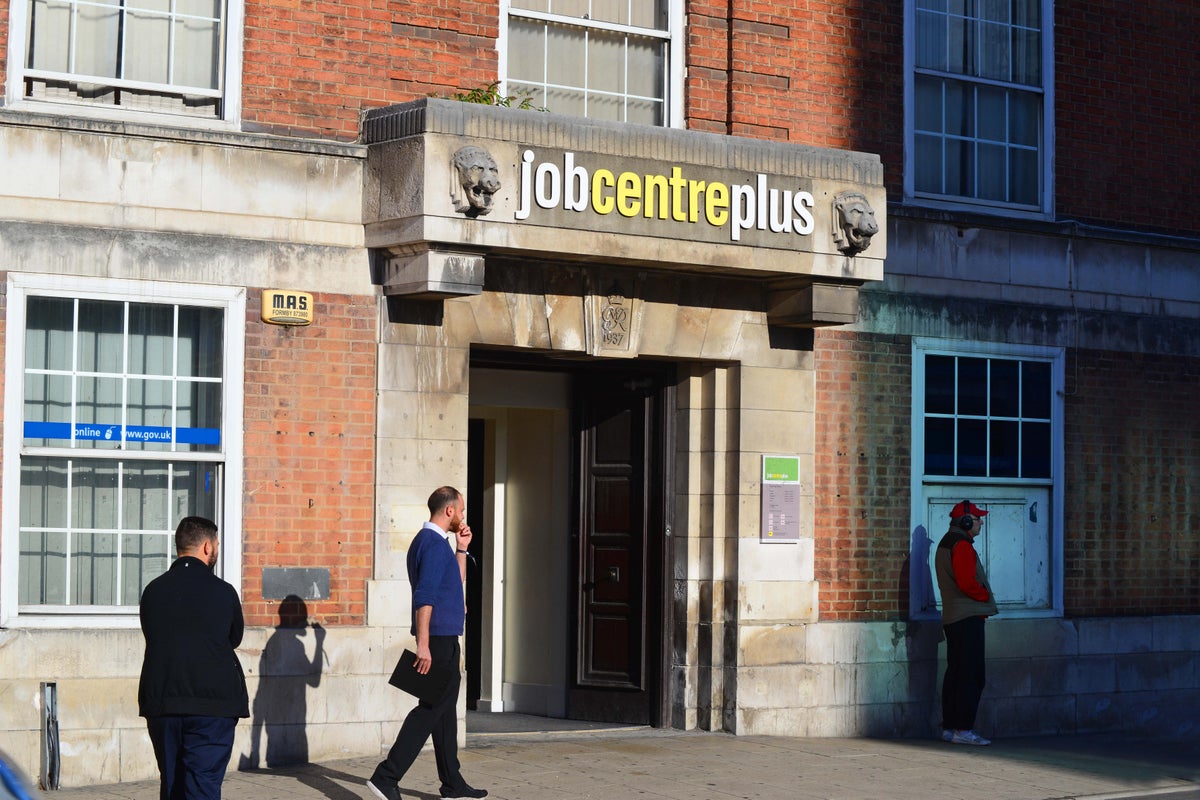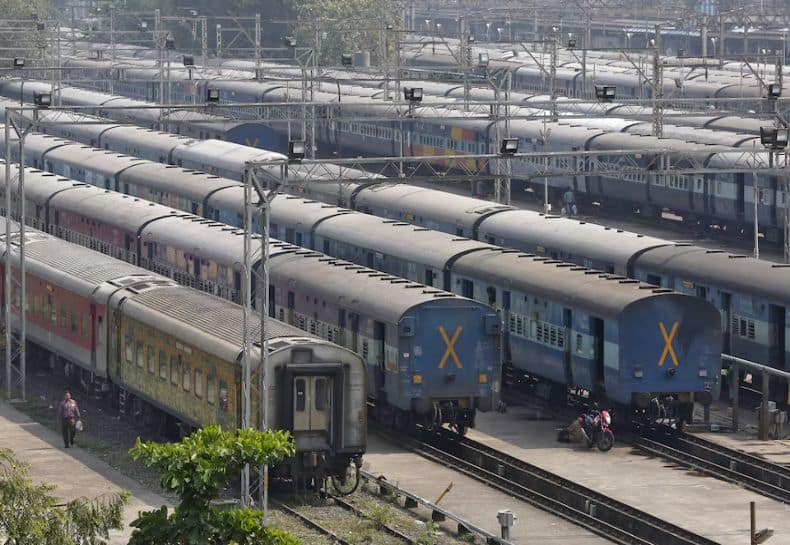Business
Children in long-term workless households highest for nearly a decade

The number of children living in long-term workless households in the UK has risen to its highest level in nearly a decade, figures suggest.
Some 1.22 million children were in households last year where no adult had worked for at least 12 months, according to estimates from the Office for National Statistics (ONS).
This is up from 1.06 million the previous year and is the highest total since 1.23 million in 2015.
The proportion of children in the UK who live in long-term workless households stood at 9.4% in 2024, up from 9.2% in 2023 and again the highest figure since 2015, when it stood at 10.1%.
The ONS defines a household as containing at least one person aged 16 to 64.
There is considerable regional variation in the data, with the proportion of children in long-term workless households in 2024 ranging from highs of 16.6% in north-east England and 12.4% in the North West to 6.8% in the South East and 6.6% in the South West.
Most regions saw a year-on-year increase in the percentage of children in long-term workless households, with only the South West and Yorkshire/Humber recording a slight fall.
In Scotland the figure is estimated at 11.3%, up year on year from 9.8%; for Wales it is 10.4%, up from 8.4%; and Northern Ireland is 11.9%, down from 12.7%.
ONS data on workless households begins in 2006 and suggests levels were higher in the late 2000s and early 2010s than in recent years.
The overall proportion of children in the UK in long-term workless households peaked at 14.0% in 2010, or 1.65 million, before falling to 10.1% by 2015 and 7.9% in 2020.
It has since resumed an upwards trend, reaching 9.4% last year.
David Finch of the Health Foundation charity said the data “paints a deeply concerning picture”, adding: “Long-term worklessness often stems from poor health, the main cause of economic inactivity, and has risen since the pandemic.
“Children growing up in workless households are at greater risk of poverty and poorer physical and mental health, which can limit their chances of future employment, creating a cycle that is difficult to break.
“The Government’s ambition to tackle economic inactivity must be led by action to prevent people leaving work in the first place.
“Government should set the conditions for employers to create healthier, more supportive workplaces that enable people with health conditions to remain and thrive in work.”
The ONS said its estimates are based on the Household Annual Population Survey and are defined as “statistics in development”, which means they are likely to contain some uncertainty and could be revised in the future.
They are also based on 2021 population totals, which are different to the estimates used for the Labour Force Survey that forms the basis for the ONS’s monthly unemployment figures.
Business
Panel questions IndiGo, DGCA babus, gets ‘unconvincing’ replies | India News – The Times of India

New Delhi: IndiGo was quizzed on Wednesday by a parliamentary committee over the misery inflicted on passengers by its mass-cancellation of flights, but it blamed a variety of factors, including system glitch and adverse weather conditions, while DGCA and the aviation ministry parried off criticism of their role in the fiasco.Some committee members termed replies of different stakeholders as “unconvincing” and aimed at washing their hands of the crisis, encapsulated by the response of a govt official that he first came to know of the unfolding ordeal through media reports.The panel, headed by JDU’s Sanjay Jha, decided to wait for the report of an inquiry ordered by DGCA before coming to a conclusion and make its recommendation. It will hold another meeting and is expected to call these stakeholders again. The DGCA-ordered committee was constituted on Dec 5 and was asked to submit its report in 15 days.Captain Sam Thomas, president of Bengaluru-based Airline Pilots Association of India, created flutter at the meeting by alleging corruption in DGCA and was asked by members to refrain from making sweeping allegations without producing evidence. He alleged that one can commit any wrong, but stay safe if he touched right feet.A committee member said IndiGo, which has offered apology for the ordeal, was far from apologetic in its response before the panel. It told the panel that several factors combined to derail its operation, including a glitch in system, which needed rebooting, and adverse weather that had their pilots stuck in different zones.IndiGo was represented by its COO Isidre Porqueras, while officials of Air India, Akasa Air, Spice Jet and Air India Express appeared before the panel as well. Civil aviation secretary Samir Kumar Sinha and top functionaries of other stakeholders were part of the deliberations.Replying to a query, IndiGo said all luggage, except 52 which remained unclaimed, have already been delivered.The panel’s meeting came against the backdrop of the suspicion, subject of investigation, that IndiGo remained resistant to the implementation of guidelines (Flight Duty Time Limitation) that allowed more rest for pilots in line with global norms aimed at ensuring flyers’ safety.It has been accused of engineering the disruption, leveraging its market dominance, to force the ministry to roll back the regulation as implementing it would have required the airline to hire more pilots. Faced with chaos caused triggered by disruption of IndiGo’s operations, DGCA had to relax the implementation of the guidelines.IndiGo management is reported to have denied allegation in meetings with ministry.
Business
Historic Green Milestone: Indian Railways Achieve 99.2% Electrification, Leaves UK, Russia And China Far Behind

New Delhi: Indian Railways has reached a milestone in its journey toward sustainable transportation, achieving electrification of 99.2 per cent of its broad gauge network. This puts India ahead of major rail economies such as the United Kingdom, which stands at 39%, Russia at 52% and China at 82%, according to a press release from the Ministry of Railways.
The achievement brings the country closer than ever to operating a fully electrified railway system. Fourteen railway zones, including Central, Eastern and Northern Railways, have already achieved 100% electrification. In addition, 25 states and union territories have completed electrification across their rail networks.
Data provided in a written reply to the Lok Sabha highlights the rapid pace of this transformation. Between 2014 and 2025, India electrified 46,900 route kilometres, more than double the 21,801 route kilometres completed in the previous six decades.
In the past two years alone, 7,188 route kilometres were electrified in 2023-24 and 2,701 route kilometres in 2024-25.
The environmental benefits of this transition are major. Rail transport emits 89% less CO2 than road transport, and Indian Railways is complementing electrification with renewable energy initiatives. So far, 898 MW of solar power has been commissioned at 2,626 stations, reinforcing India’s commitment to a greener transportation network.
Electrification is advancing consistently across zones. The Central, East Coast, East Central, Eastern, Konkan Railway, Kolkata Metro, North Central Railway, North Eastern Railway, Northern Railway, South Central Railway, South East Central Railway, South Eastern Railway, West Central Railway and Western Railway have achieved full electrification.
Other zones, such as North Western, Southern, Northeast Frontier and South Western Railway, have crossed 95% electrification.
The progress is equally impressive state-wise as well. Most states are fully electrified, while Rajasthan, Tamil Nadu and Karnataka are nearing completion. In the North Eastern region, the broad gauge networks in Arunachal Pradesh, Meghalaya, Nagaland, Tripura and Mizoram have been 100% electrified, while Assam stands at 92%, with work underway to complete the remaining sections.
All new rail lines and multi-tracking projects are now being sanctioned with electrification integrated from the beginning. According to the Ministry of Railways, the completion timeline for electrification projects depends on factors such as forest clearances, relocation of utilities, statutory approvals, geological and topographical conditions, law and order situations and climatic constraints, which can affect progress at different project sites.
Beyond expanding connectivity, electrification is central to India’s sustainability agenda. The move to electric rail corridors is helping dramatically cut carbon emissions. For instance, transporting 1 tonne of freight over 1 km emits 101 g of CO2 by road, compared with just 11.5 g by rail, an almost eightfold reduction.
The Indian Railways aims for 100% electrification while contributing to the nation’s goal of net-zero carbon emissions by 2030. Every new rail project now includes electrification from the outset, ensuring that India’s railway system grows greener, more efficient and globally competitive.
Business
Medical supply firm Medline jumps more than 30% in debut after biggest IPO of 2025

Shares of U.S. medical supplies giant Medline jumped more than 30% in its debut on the Nasdaq on Wednesday after the biggest initial public offering of the year globally.
The stock opened at $35, up from its $29 IPO price.
The private equity-owned company sold a little over 216 million shares on Tuesday, raising $6.26 billion in an upsized offering that finished off a strong year for new listings and bolstered optimism about the IPO market in 2026. Shares of Medline will trade under the symbol MDLN.
That IPO pricing gives Medline a market value of at least $37 billion, based on the shares listed in its regulatory filings.
“Historically, we’ve done very little advertising, very little marketing, and this gives us a way to amplify our voice and actually expand really the receptivity of who we are,” Medline CEO Jim Boyle told CNBC’s “Squawk Box” earlier Wednesday. “We are the largest company you’ve never heard of, and we happen to be everywhere. And that’s a really interesting thing.”
The U.S. IPO market has held steady despite market volatility in the spring, driven by President Donald Trump’s sweeping tariffs, and the longest U.S. government shutdown in history in the fall. Just over 200 IPOs have priced this year, including Medline, which is the largest U.S. listing since Rivian‘s $13.7 billion deal in November 2021, according to data compiled by CNBC.
But Medline’s IPO is also among the biggest private equity-backed listings. Three private equity firms — Blackstone, Carlyle and Hellman & Friedman — acquired a majority stake in the company in 2021 for a whopping $34 billion. At the time, the deal was the biggest leveraged buyout since the financial crisis.
CEO Jim Boyle celebrates with others as medical supplies giant Medline (MDLN) holds it’s IPO at the Nasdaq stock market site in Times Square in New York, Dec. 17, 2025.
Shannon Stapleton | Reuters
Medline, founded in 1966, is based in Northfield, Illinois. The company manufactures and distributes roughly 335,000 different medical and surgical supplies — from gloves, masks and scalpels to wheelchairs. Medline has customers in more than 100 countries and, as of the end of 2024, employed more than 43,000 workers worldwide.
Medline’s total debt was around $16.8 billion as of late September 2025. The company raked in $25.5 billion in net sales in 2024.
Medline’s earlier plans to go public this year were postponed due to uncertainty around tariffs affecting products from Asia. The majority of the company’s products are sourced or manufactured in Asian nations, particularly China.
Medline expects a $150 million to $200 million hit from tariffs to income before taxes in fiscal 2026.
The company competes with names like McKesson and Cardinal Health.
— CNBC’s Gina Francolla contributed to this report
-

 Business4 days ago
Business4 days agoHitting The ‘High Notes’ In Ties: Nepal Set To Lift Ban On Indian Bills Above ₹100
-

 Politics1 week ago
Politics1 week agoTrump launches gold card programme for expedited visas with a $1m price tag
-

 Tech1 week ago
Tech1 week agoJennifer Lewis ScD ’91: “Can we make tissues that are made from you, for you?”
-

 Business1 week ago
Business1 week agoRivian turns to AI, autonomy to woo investors as EV sales stall
-

 Sports1 week ago
Sports1 week agoPolice detain Michigan head football coach Sherrone Moore after firing, salacious details emerge: report
-

 Business1 week ago
Business1 week agoCoca-Cola taps COO Henrique Braun to replace James Quincey as CEO in 2026
-

 Fashion1 week ago
Fashion1 week agoTommy Hilfiger appoints Sergio Pérez as global menswear ambassador
-

 Tech1 week ago
Tech1 week agoGoogle DeepMind partners with UK government to deliver AI | Computer Weekly






